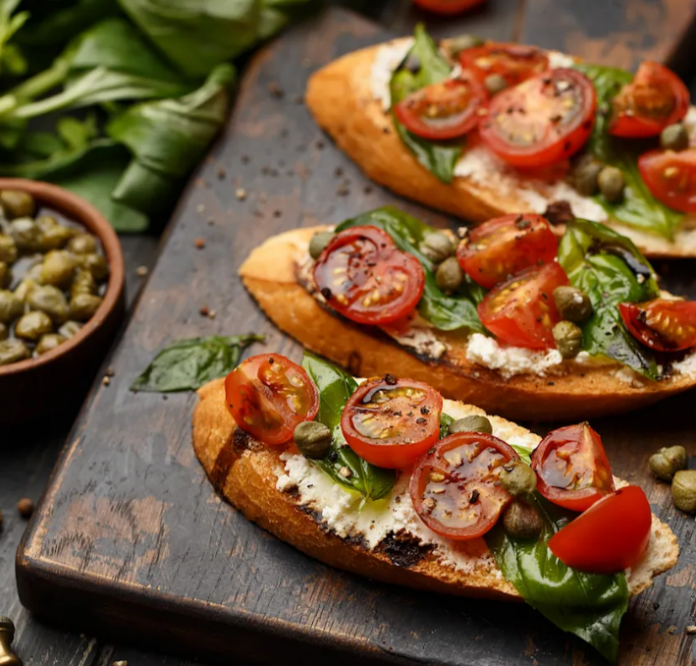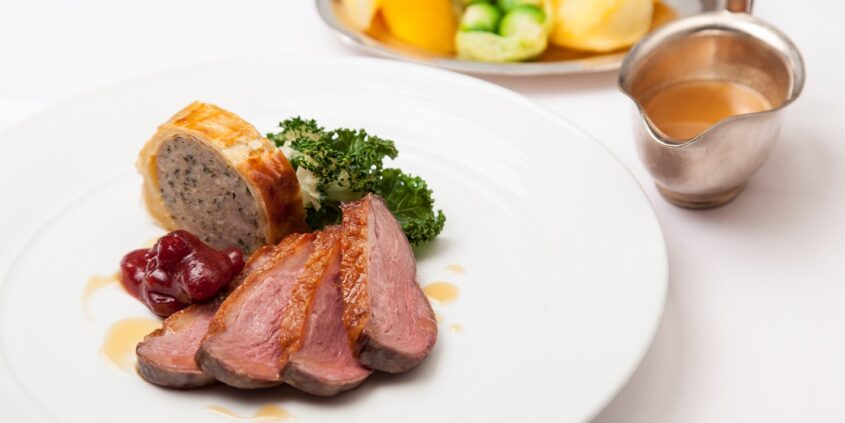
When we think about Italian food, it evokes memories of rolling Tuscan hills, the beauty of the alpine lakes, and the arid olive groves of the south. We dream of antipasti laden with juicy sun-dried tomatoes, creamy mozzarella, and the finest charcuterie. Pasta comes in all shapes and sizes with sauces as simple as pesto to a hearty ragout. Main courses utilize the best game and fish available, and we haven’t even talked about those desserts. Oh, those desserts! From meringues to tiramisu, they will all leave your lips tingling and your waist demanding exercise. Using traditional ingredients, here we will take a look at how to create the perfect Italian dish, whether you’re lucky enough to be in Italy or are overseas.
Antipasti

Antipasti in Italian translates as ‘before the meal,’ and that is exactly what it is. It is social snacking and drinking before the main event kicks off. But what do antipasti construe? Well, we’ve all heard about sundried tomatoes, mozzarella, and charcuterie, but there are many other options as well that will awaken your taste buds and prepare you for the feast to come. No antipasti are complete without bruschetta spilling over with vibrant tomatoes, or maybe you could try a light eggplant salad with beans and capers.
Vegetarian? Well, a carpaccio of zucchini may not be at the forefront of everyone’s mind (or lips), but it can be a perfectly refreshing taste of what is to come, with a vibrant salsa and a shaving of parmesan. Remember, these small plates should be easy for sharing and should awaken the palette before the treats ahead.
Pasta

Where do we start?! Italians love their pasta like the British love their fish and chips, and only there are hundreds of different varieties and sauces. What is most important, though, is the quality of the pasta and the ingredients (this won’t be the first time I mention this!) Depending on the size and shape of the pasta your sauce will vary: long thin pasta like pappardelle go best with looser sauces so the sauce coats the pasta, whereas textured sauces like bolognese are better with fusilli or conchiglie since the sauce will be captured. Chunky sauces filled with vegetables are best with tubular pasta, such as penne.
Be careful not to overdo these dishes, they should be a light flavorsome entry to the meal and can be perfectly adapted to vegetarians and vegans alike. Making the pasta can also be highly rewarding, though some of the more difficult shapes take years of practice. If you do buy, make sure it is as fresh as possible using the best quality flour.
Main Courses

Some would say that the main course is also the main event in Italian cuisine. Often only one main ingredient will be showcased, and, of course, the emphasis here is on the quality of the ingredients and the skill of the cooking. Meat dishes are delicious, but often it is not possible to buy your meat as fresh as you can your fish. You can find and visit this site for organic, ethical meat that is both delicious and healthy. You also have more licenses to cook more hearty stews using the game when in seasons, such as braised rabbit or a long, slow-cooked venison stew. Fish dishes should ideally use produce caught that day, prepared with as minimal a fuss as possible. Cod could be topped with a simple pesto, tuna served with courgettes and capers, and sea bass pan-fried and served with mashed potatoes.
Dessert

Where can we say about the desserts?! These can range from the sugar-laden delights such as tiramisu or a panettone and honey pudding to classics utilizing the best fruits available such as peaches with butterscotch sauce. You will often find that fruit brings a perfect ending to a meal as it can be palate cleansing but also provides sweetness and flavor. As with every course the fresher the fruit, the more taste it brings. Italians also like to add a certain booziness to their deserts, as we have seen with Tiramisu, and often a traditional panna cotta could be livened up with a hint of baileys or other Irish cream liquor.
Drinks

Italy is a famed producer of the highest quality wine with production in 20 different regions, which have given rise to a remarkable variety of styles and flavors, with white, red, and sparkling all to the fore. Find a good quality vintner and explain to them what you will be eating and they will point you in the right direction whether it is too a classic cava to start the meal off, a light, zingy pinot grigio to accompany the pasta or a bold rich chianti to wash down that winter stew. Why stop just at the wines, the Italians don’t?! There is a bewildering array of stronger spirits for all tastes from the sweet limoncello or amaretto to a more fortified grappa. Take the plunge as they go perfectly with the final part to an Italian meal – the coffee. Drunk short and often sweet in the espresso-style, no Italian meal is complete without at least one coffee.
The Italian meal is a complex affair, and as we have seen, there are many different dishes involved. To create the perfect dish requires several elements, from the finest freshest vegetables and seafood to the highest quality game from the Tuscan hills. The key is the ingredients, choose well, and your dish will sing. Keep the dishes simple and remember to use seasonal products, and cook them with the love and attention that they deserve. Don’t go chasing that asparagus in December, do what the Italians would do and eat what is available at the correct time of the year.
Accompany your dish with the finest Italian wine, perfectly tailored to the ingredients in question, and once the bottle is shared, end your meal with a digestif and coffee. All you need now is to imagine the sunset over the Sicilian water, with a happy gathering of family and friends, and you have your perfect Italian dish.











